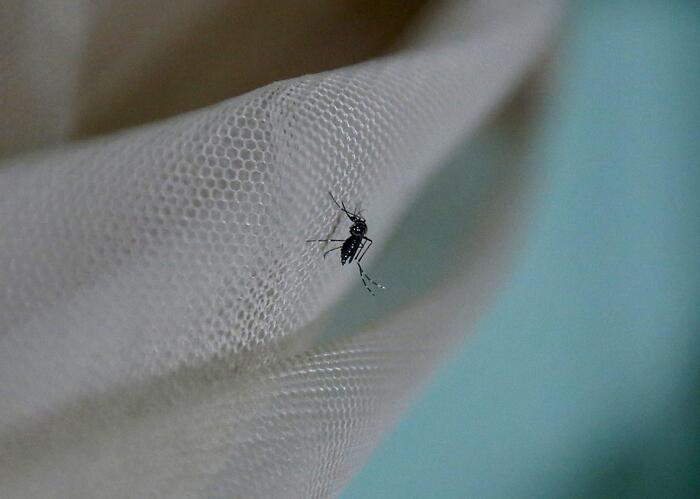Our tendency is to wrap them up as much as possible, but this is dangerous.
A baby wrapped in a blanket and a hat (Photo: ShutterStock)
The risk of cot death is about 2.5 times higher in the winter months compared to the summer months.
In fact, 50 percent of the cases of the syndrome occur between the months of January and March.
Crib death is the sudden, unexpected and unexplained death of a baby under one year of age while sleeping.
It is the main cause of death in babies between one month and one year old (the common age range is 2-4 months), and in Israel about 50 reports of cases of death in the crib are received every year.
Although this is a rare phenomenon, the lack of knowledge about it makes it a significant source of concern for many parents.
Here are the things that are important to pay attention to in order to reduce the risk of cot death.
the sleeping environment
It is important to know that a warm environment does not always protect the baby, on the contrary - overheating of the room is one of the main causes of the death of babies in their sleep during the winter season.
The baby's room temperature should be pleasant for him, preferably between 22 and 23 degrees Celsius.
The safest means of heating are an air conditioner and a radiator, but it is important to remember that all heating means have one clear disadvantage - drying the air.
To prevent dryness in the room, you should equip yourself with a cold humidifier, or place a bowl of water in it, to add moisture.
The baby should be placed to sleep on his back, in the lower third of the bed or crib, on a firm mattress with a well-stretched sheet on top.
Do not put a soft, thick or warming bed like a duvet under the baby's body.
And although a baby bed filled with colorful dolls, sweet pillows and soft toys is a wonderfully cute sight, the bed should be empty of everything.
This includes soft bedding, free pillows and blankets, cloth diapers, games and head protectors.
Lay them on their backs and remove all objects from the bed.
A baby sleeping on his stomach (Photo: ShutterStock)
Sleeping bag or blanket?
The Atid association, similar to health organizations in the US and Europe, recommends using sleeping bags instead of blankets, which can cover the baby's face and cause death by suffocation. In addition, using sleeping bags contributes to maintaining a constant body temperature, unlike blankets that can be released from their grip on the mattress and leave the baby exposed.
It is important to choose sleeping bags that are appropriate for the age, weight and height of the baby (it is not recommended to use a bag larger than necessary), and it is important that the head key is not too wide, so that it does not rise and cover the baby's face.
More in Walla!
Why do most cot deaths occur in nurseries?
To the full article
When using a sleeping bag at the recommended room temperature, one layer of clothing underneath is sufficient.
It is very important to adjust the degree of thermal insulation of the fabric from which the sleeping bag is made, known as TOG, to the room temperature.
For example, in the recommended range of 22-23 degrees Celsius, the appropriate thermal insulation should be TOG 1 with one layer of clothing underneath.
If you still prefer to use a blanket, make sure it's thin, lightweight and has a degree of thermal insulation suitable for the ambient temperature, to prevent the baby from overheating.
The blanket should be tucked well under the mattress, so that it covers the baby up to the height of the armpits with the head exposed and the hands free.
Loose blankets can cause head covering and suffocation while sleeping.
How do you dress the baby?
To prevent overheating, it is important to dress the baby in a way that suits the environment in which he is supposed to sleep.
Don't be tempted to wrap it more than necessary - remember that even if it's really cold and windy outside, the room is cozy and there's no need to overdo it;
It's even dangerous.
When dressing a baby, you should adopt the layering method, which allows for flexibility and quick and easy changes when necessary.
For example, when the temperature around rises or when you feel that the baby's chest is warm to the touch or sweaty - a layer should be removed.
Guidelines for safe sleep of the Atid association and organization before:
• When you put the baby to sleep - day and night - always make sure to put him to sleep on his back.
• Use a stiff mattress and a matching, stretched sheet in the bed, or in a crib with standard features.
•Up to the age of six months (and preferably up to the age of one) the baby is put to sleep in a crib or in a separate bed in the parents' room, next to their bed.
• Do not put a baby to sleep in the parents' or siblings' bed, on a sofa, chair or armchair, neither alone nor with the parent.
• Do not leave a baby to sleep in a car seat, swing or trampoline.
If he falls asleep, he should be moved to a bed or crib.
•Keep a sleeping environment free of soft objects such as pillows, loose bedding, dolls and head protectors.
•Absolutely avoid smoking during pregnancy, and around the baby.
Studies have found breastfeeding to be a protective factor against cot death.
A mother breastfeeds a baby (Photo: ShutterStock)
Avoid overheating the room: the recommended temperature is 22 degrees Celsius.
•Avoid dressing the baby in extra layers of clothing.
•Full breastfeeding has been found to be a protective factor against cot death.
Partial breastfeeding also reduces the risk of this, but less.
•Sleeping with a pacifier has been shown to effectively reduce the risk of SIDS.
If the baby is breastfed, it is recommended to postpone the use of the pacifier until breastfeeding is established, at the age of 3-4 weeks.
In any case, it is forbidden to attach the pacifier to a chain or any other connection that could cause suffocation while sleeping.
• It has not been proven that a respiratory monitor - a device that contains a sensor that measures the baby's breathing rate, prevents cot death.
But it can certainly cause unnecessary anxiety in young parents when it calls them at high volume in the middle of the night just because the baby moved a little, and the sensor was not able to measure his breathing.
Dr. Anat Shatz is the chairperson of the Atid Association for the Prevention of Sudden Infant Death, the board member and the chairperson of the Health Promotion Committee of the World Organization for the Prevention of Sudden Infant Death
.
health
parenthood
a drop of milk
Tags
cradle death
babies








